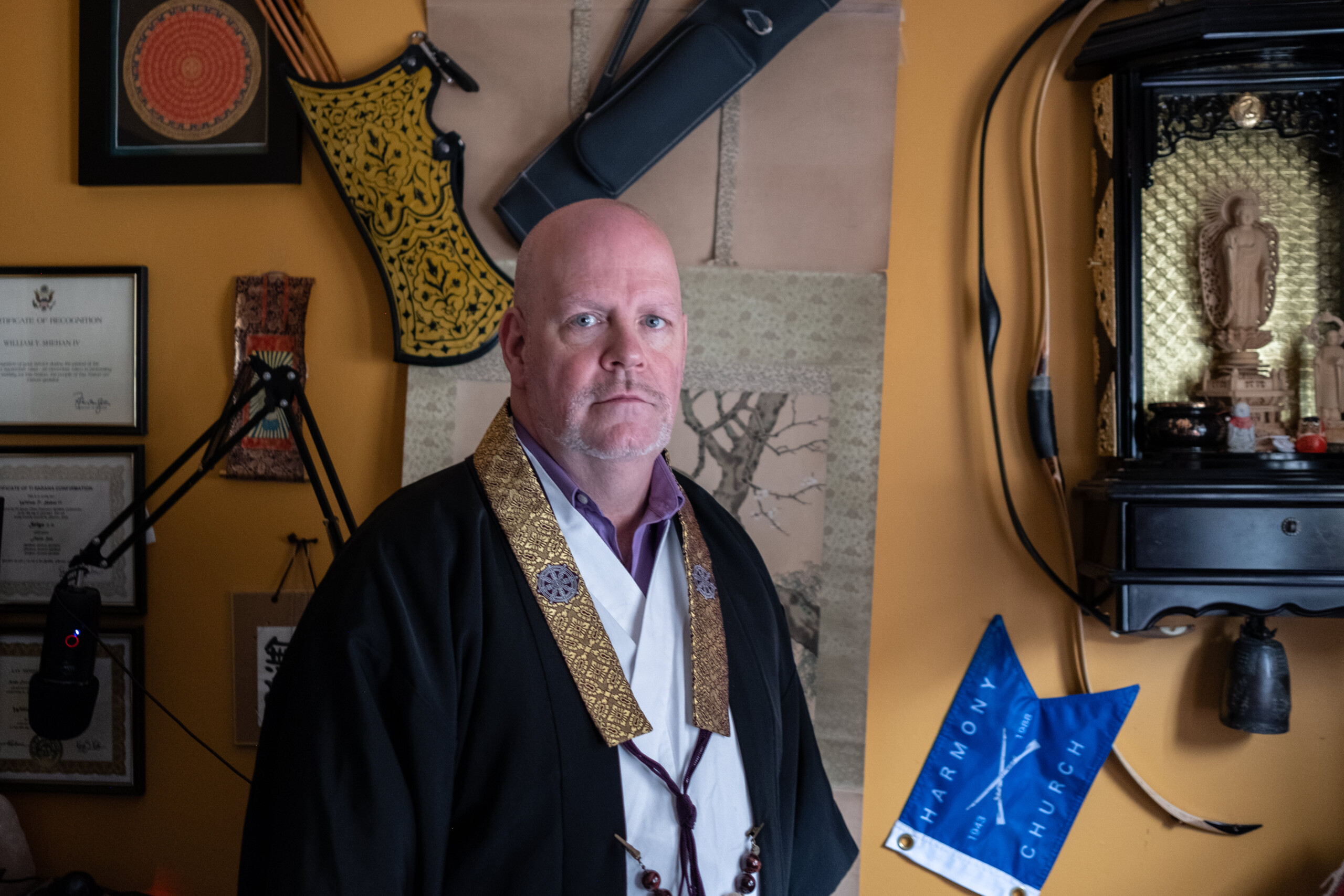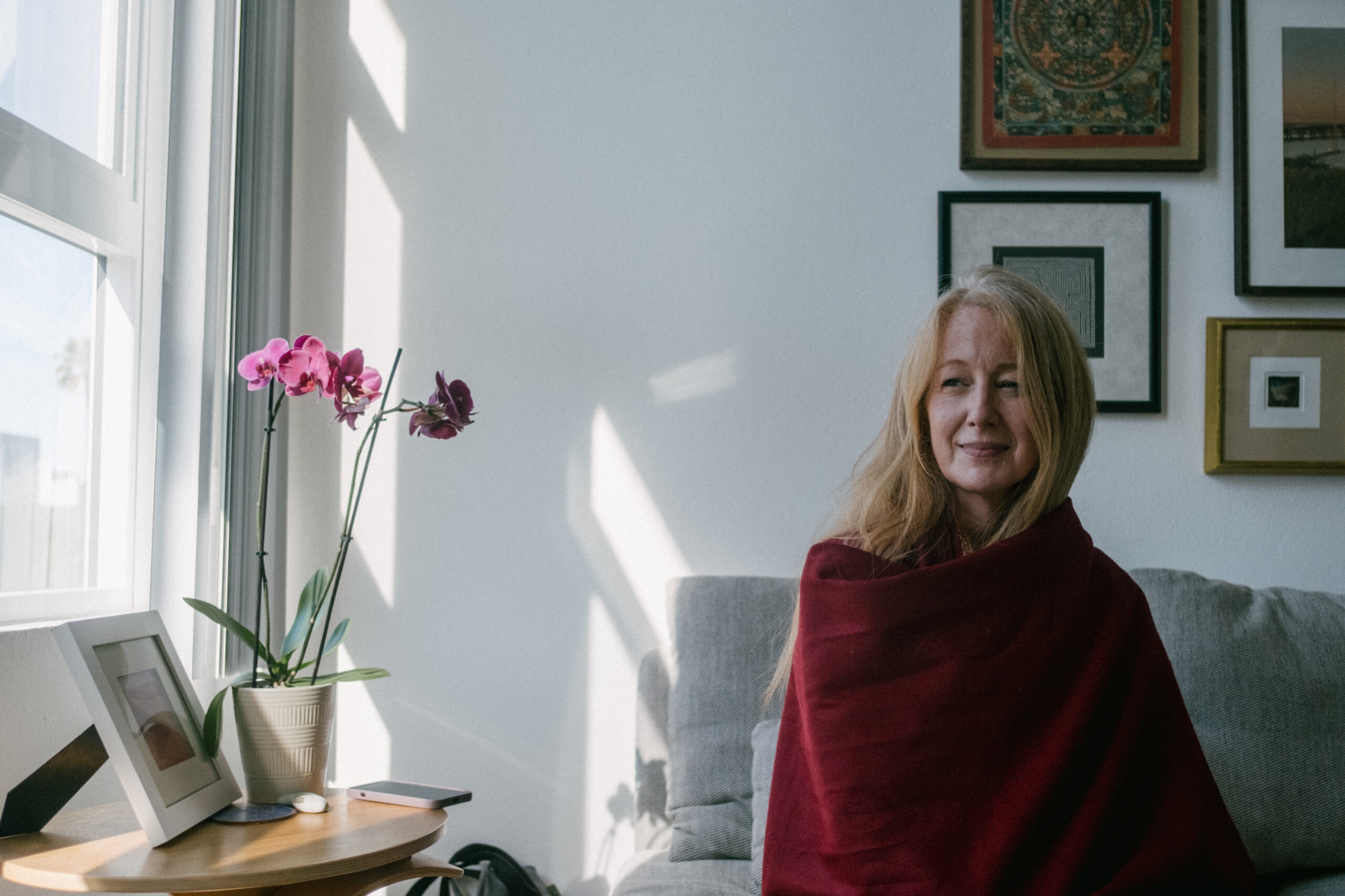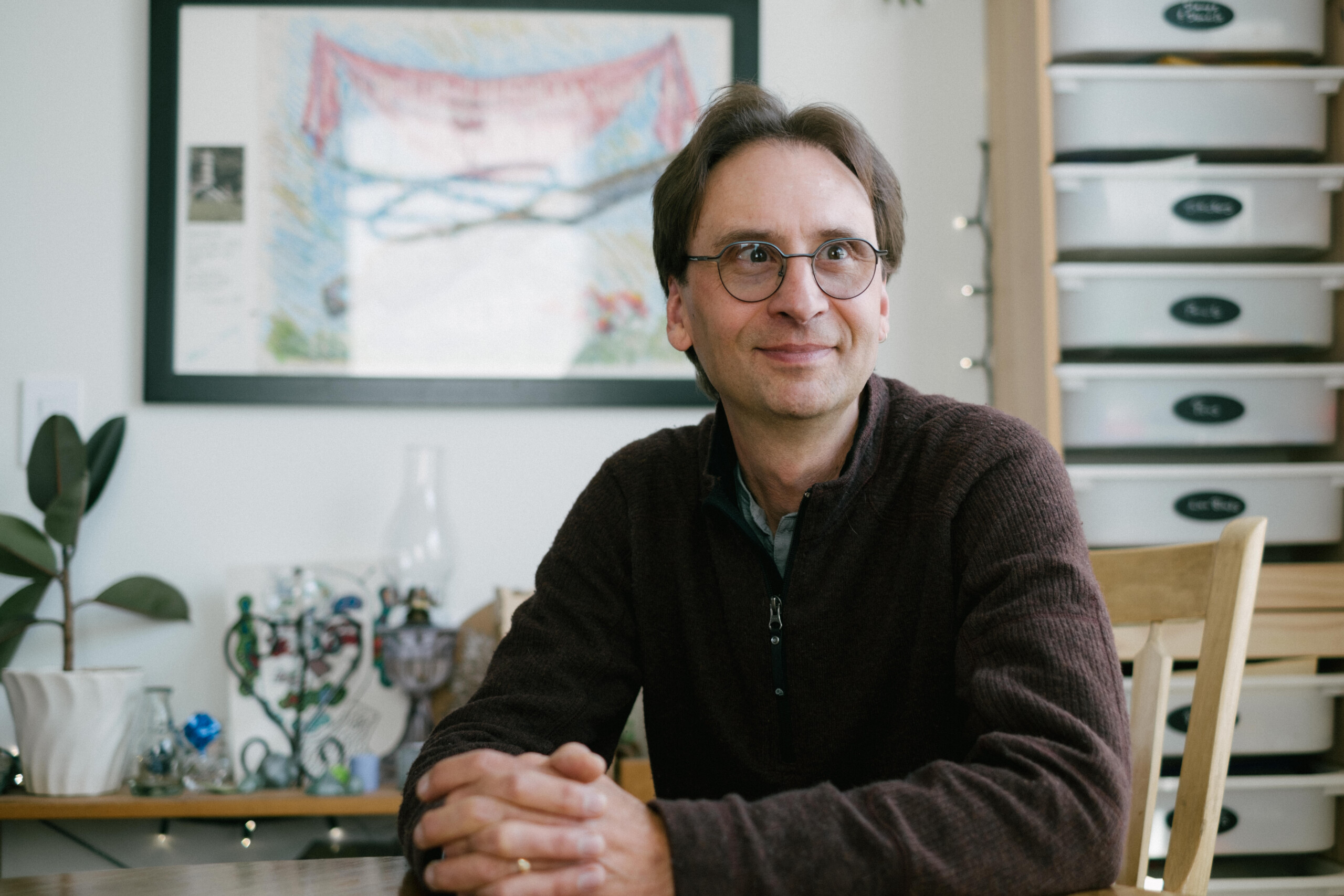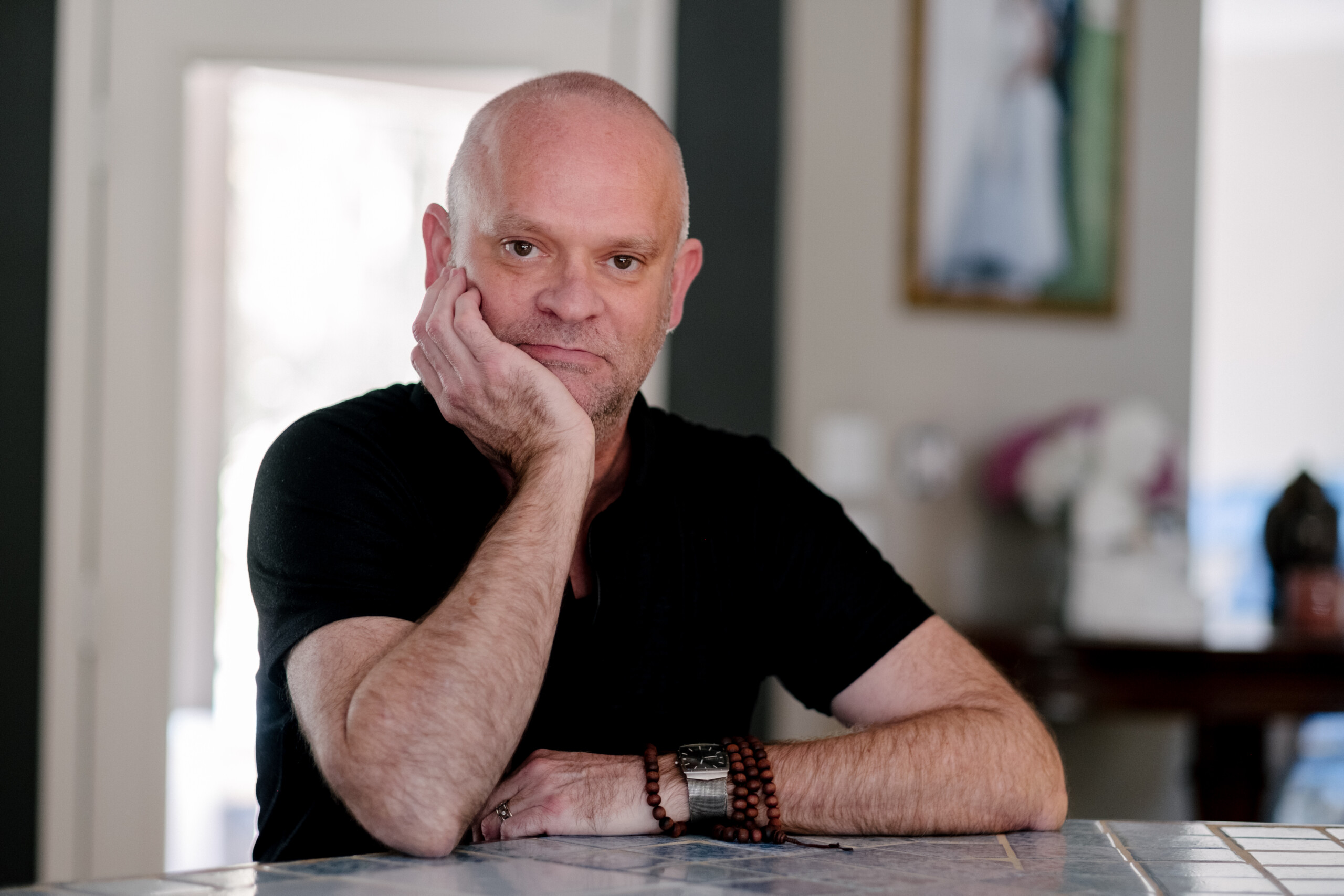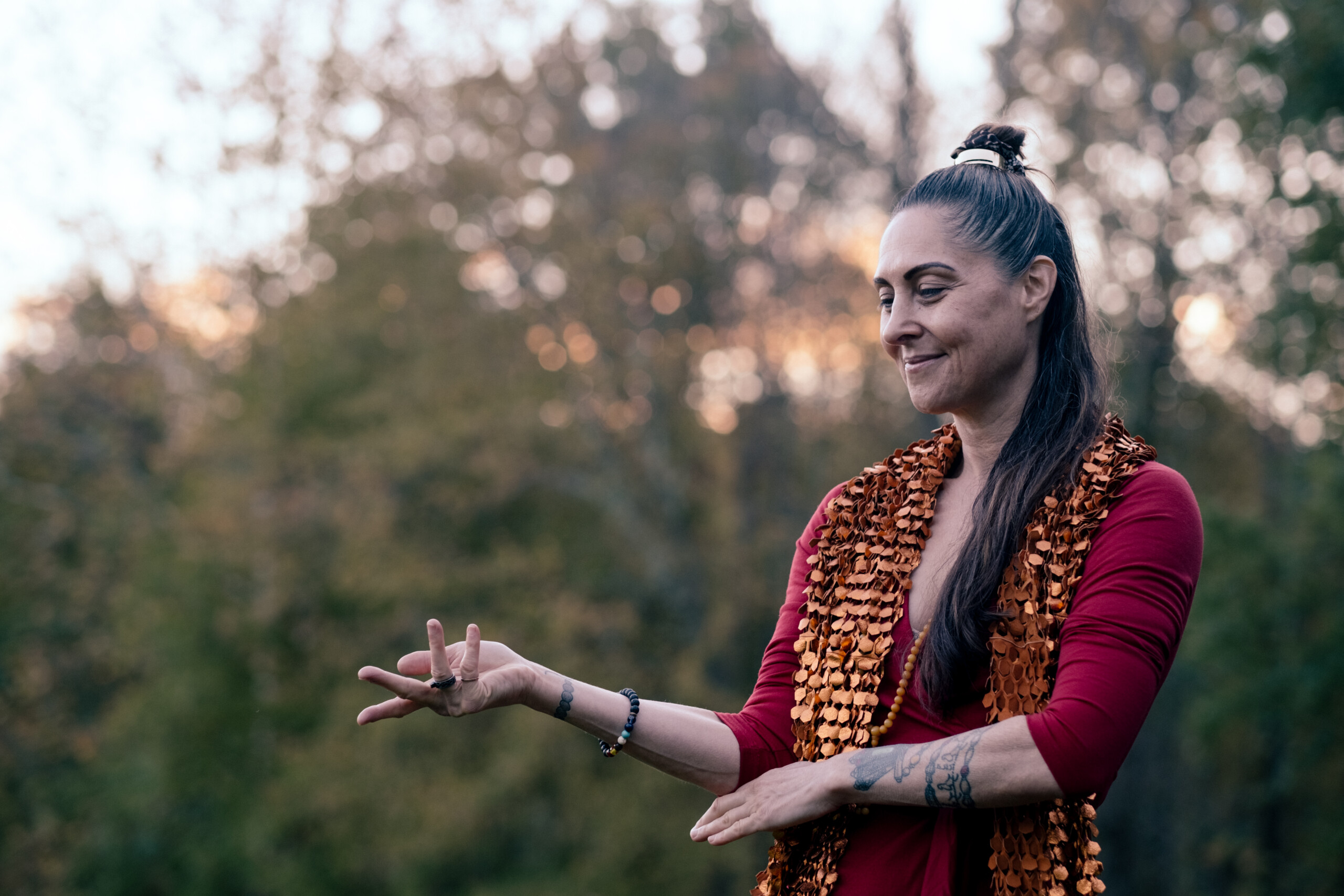William
William, a combat veteran with a diverse background, is deeply connected to his roots despite being far from them. Born in Charleston, South Carolina, to a Protestant minister grandfather and a missionary grandmother, he was exposed to various cultures during his travels with his grandmother to places like Central and South America, Pakistan, and more. His journey into Buddhism began while traveling with his grandmother as a missionary. Despite initially considering following in his grandfather's religious footsteps, William found himself drawn to Buddhism. This interest deepened during his time in the military, where he sought solace in Buddhism's teachings while enduring challenging training.
Colleen
In Colleen's quest for spiritual fulfillment, the path she embarked upon was marked by unexpected twists and profound encounters. Initially drawn to meditation as a means of relaxation, she found herself inexplicably captivated by the rich tapestry of Buddhist teachings. Her journey took a remarkable turn when she stumbled upon a Tibetan temple, a kaleidoscope of colors and imagery unlike anything she had encountered before. There, she encountered a high-level teacher whose gaze seemed to penetrate her very soul, igniting a sense of familiarity and comfort she couldn't explain.
Steven
Steven resides in Bozeman, Montana, with his wife and 13-year-old son, accompanied by a couple of cats. Despite a professional background in science education and media production, Steven now primarily fulfills the role of a house spouse, dedicating himself to supporting his family, Sangha community, and Dharma community. A digital artist and enthusiast of photography and outdoor activities, Steven finds joy in creating art and contributing to the beauty of the world. His commitment to fostering relationships and communities stems from a deep desire to bring more beauty into the world. However, he acknowledges the challenges he faced in establishing connections earlier in life, crediting his Dharma practice for helping align his aspirations with skills and abilities.
Donovan
I was going through the process of 12 step, got a sponsor, did those things that we're supposed to do. But I wasn't feeling it at all. I was just going through the motions and I was not it was not working. And so I asked someone at the treatment center when I was outpatient about how to what what I could do, like what are my options. And he gave me two names and I called both of them. And the first one to call me back was Alejandro Trouble. And that was the beginning of my of my path.
Geshe Denma
Geshe Denma Gyaltsen was born in the Dolpo region of northern Nepal. In 1981 his father brought him to Menri Monastery in India, regarded as the most important Bön monastery, to begin his program of study toward the Geshe degree.
Amber
Tibetan Buddhism resonates so strongly with me firstly, because of karma. It is well known to me from past lives and now I am remembering. So it is very dear to me and has stirred deep emotion from my first exposure. I think it is probably this way with most practitioners, once it grabs a hold of you, it’s like welcoming a dear old friend back into your life after a long absence.
Jude and Emma on parenting
The initial years of Aaron’s spiritual journey were tumultuous, deviating from the traditional path outlined by the Buddha. While the typical progression involves purifying ethics and gradually cultivating mindfulness, Aaron found himself in college, engaging in a lifestyle characterized by drinking, smoking, and casual relationships. This misalignment with ethical principles created challenges when he experienced an awakening.
The awakening brought a surge of energy, but Aaron struggled with unresolved habits and ethical conflicts. Attempting to balance his newfound spiritual experiences with his existing lifestyle led to periods of borderline psychotic episodes. The powerful energy demanded a reevaluation of his behaviors, including refraining from substances like weed and alcohol, and adopting a more disciplined lifestyle.
As Aaron navigated this transformative period, he discovered the supportive role of Ashtanga yoga in addressing addiction and bodily cravings. Ashtanga’s emphasis on purifying energy and creating softness in the body proved beneficial in breaking negative patterns associated with substances.
Despite the positive impact of Ashtanga, Aaron acknowledged the challenges in managing increased energy. Zen practice, with its focus on concentration and breathing, presented a mixed experience. While he appreciated learning concentration techniques, Aaron reflected on how it may have initially reinforced certain delusions, making aspects of his journey more challenging.
In summary, Aaron’s early spiritual journey involved a struggle to align his newfound awakening with an existing lifestyle, leading to a transformative process that required significant adjustments and the exploration of various practices, including Ashtanga yoga and Zen meditation.
William on loss
William reflects on his late wife’s spiritual journey, describing her upbringing in the Catholic tradition and her early achievements as a concert pianist. Despite her dedication to Catholicism, she faced challenges and questions, especially after her divorce and excommunication from the church. William noticed her searching for something more, delving into topics like quantum mechanics.
Over the course of their relationship, spanning 21 years, William observed her evolving views. She explored Buddhism, influenced by William’s own Buddhist path and experiences with monks. Eventually, she took her vows and adopted the Buddhist name Joe, embodying all-encompassing compassion. This transition occurred about six months before her passing.
William emphasizes the significance of her Buddhist practice in coping with illness and facing the impermanence of life. He recounts moments of acceptance and how her evolving understanding of Buddhism helped her find peace. Even in the face of illness, she remained committed to her pursuits, organizing a Zoom class the day before her passing.
As William shares the details of her final moments, he expresses a mix of grief and joy. He highlights the impact of her teachings and the sense of community support, drawing parallels between Buddhist concepts and the interconnectedness of life. William appreciates the role of Sangha, the community, in providing comfort during difficult times.
The narrative extends to their daughter, who embraced Buddhism in her own way. William stresses the importance of leading by example and living the Dharma rather than merely preaching it. He details their daughter’s multicultural upbringing, acceptance of diversity, and her reliance on Buddhist principles in coping with her mother’s passing.
In closing, William reflects on the strength and acceptance demonstrated by both his late wife and their daughter in the face of impermanence. He expresses gratitude for the support from various traditions and communities during this challenging time, highlighting the enduring impact of living a life aligned with Buddhist principles.
Donovan on relationships
In Donovan’s transformative journey with Buddhist practice, profound changes in his perceptions and interactions with others became evident. Previously, he would avoid eye contact with homeless individuals, distancing himself from their existence. However, as his Buddhist practice deepened, he found himself extending compassion, recognizing their needs, and offering assistance without judgment.
This shift extended beyond personal encounters to his professional life. Donovan, once quick to form rigid judgments about people, became more open-minded and less judgmental. The need to be superior to others faded, allowing him to focus on providing genuine care. This change positively impacted his career, with colleagues acknowledging his skills without the pressure of being the “best.”
Amid personal challenges, such as a divorce and subsequent remarriage, Donovan found solace in his Buddhist practice. Alejandro, his spiritual guide, even officiated his wedding. The newfound openness and connectedness extended to his role as a stepfather, contrasting with his previous rigid parenting style. Despite imperfections, conflicts became easier to navigate, fostering a sense of peace.
Donovan reflected on how his practice influenced his approach to people from diverse backgrounds, eradicating aversions and fostering a genuine acceptance of others. He illustrated instances where he intentionally avoided knowing about prisoners’ pasts, treating each person with equal care regardless of their circumstances. This shift highlighted a significant evolution in his perspective, emphasizing compassion and understanding over judgment.
In essence, Donovan’s Buddhist practice profoundly infiltrated both his personal and professional life, fostering a more relaxed, open-minded, and peaceful existence. The transformation he underwent allowed him to engage with others authentically, fostering connections that transcended previous limitations.
Ben on the workplace
In contemplating active bodhichitta, Ben expresses that being actively beneficial takes various forms, extending beyond conventional acts like running a Buddhist center. He highlights the importance of embodying this altruistic mindset in every interaction, both within and outside the spiritual community. Ben reflects on his role as an engineering manager in the steel industry, emphasizing the intention to foster human development within his team rather than merely focusing on financial objectives.
Viewing his job as a means to support his broader aspirations, Ben aims to infuse his work with Buddhist principles, prioritizing the growth and development of his team members. He stresses the significance of approaching every situation as an opportunity to be useful, aligning with the Buddha’s example of working selflessly for the benefit of others. For Ben, the essence of being a Buddha lies in consistent usefulness in all aspects of life.
Ben encourages integrating Diamond Way teachings into daily work, seizing opportunities to assist others and fostering a supportive environment. He believes that genuine engagement with the world, rather than seclusion in a Buddhist center, is essential for embodying the principles of Buddhism. Ben aligns his understanding with the teachings of Diamond Way, emphasizing the importance of action as a core element of the spiritual path.

